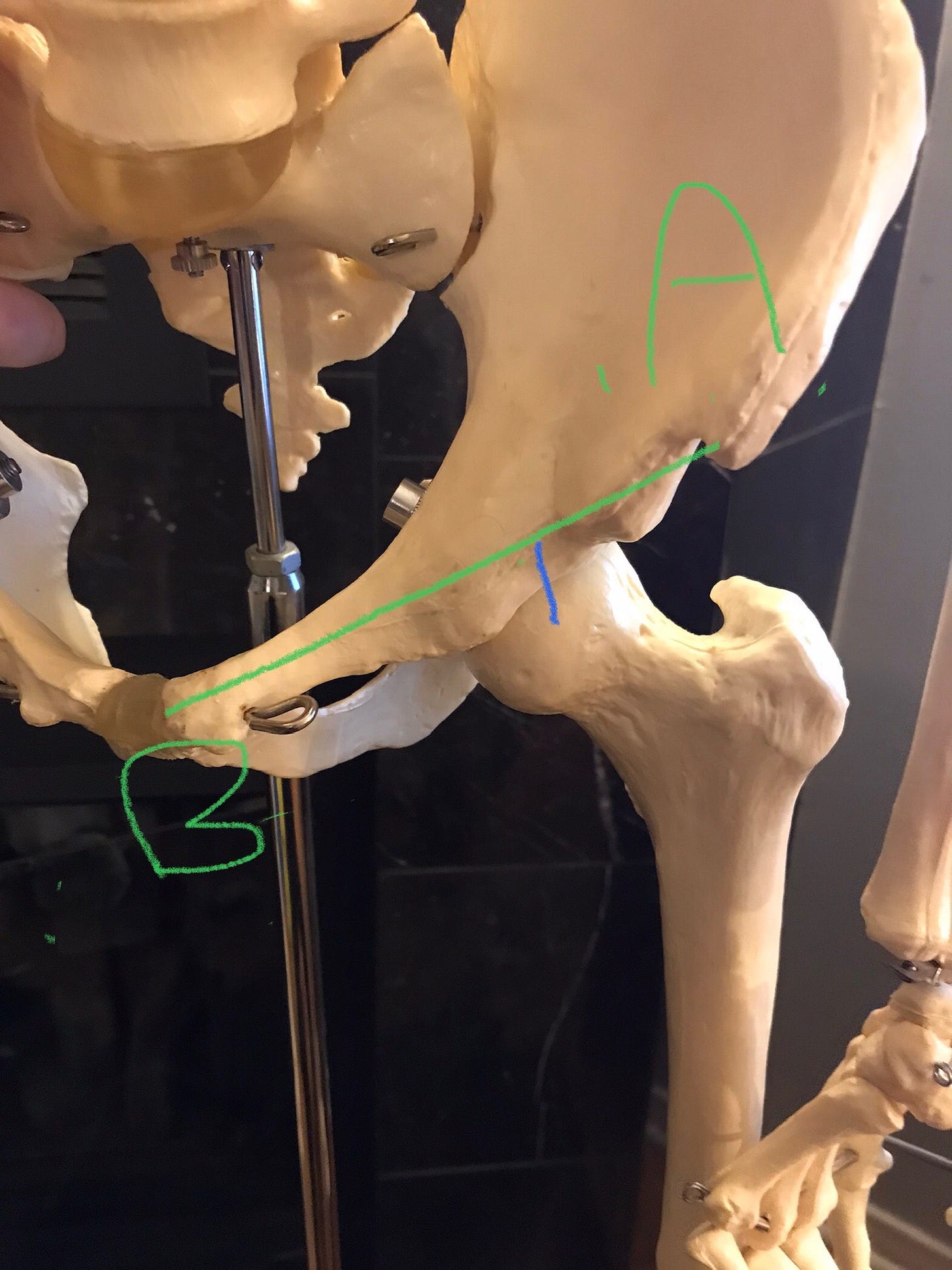Marianne writes…
“I would describe this lesson as bringing awareness to the hip joints by exploring precise, unusual and at times challenging movements. I have described some of the strategies that I found helpful for this lesson in the hope that they may be of help to you as you explore this lesson:
1. Locating the hip joints
(In this lesson Moshe asks us to) “Pay attention to what you feel in the hip joints.. if it is possible to sense where there are joints in the hips. Do this movement many times… not with power. Pay attention if you feel movement in the hip joints, if it is possible to feel where there are joints. Make very easy movements just to feel where the joints are.”
“Pay attention if the exact place of the head of the hip joint has become clearer, if you can distinguish where it is”
Hip Joint from right side and behind… the socket (acetabulum) in the pelvis and ball (rounded head of the femur. It may be helpful to clarify the location of the hip joints before or after doing the lesson.

Place another finger on the pubic symphysis Green “B” on diagram… draw a line between these two points; about midway between the tow points go down about an inch… this is the front of the hip joints in standing, place the right index or middle finger on the front of the right hip joint and the left index or middle finger on front of the left hip joint, then do a small movement as if to begin to sit on a chair… when you feel the fingers/hip joints move backwards you have located tori hip joints.
2. Movement of Bending leg out to side
The lesson involves bending the hip and knees with the knee rolled out to the side… this is the way babies bend their legs and is a pattern that can be recognized.
the lesson progresses to holding the leg bent out to the side in the air. Please stay within the comfortable range of your hip joints and stop if you feel discomfort or pain… please leave your leg supported on the floor if this is where you find comfort and ease.
3. Relative conjugate movements
Movements of the arms or legs usually involve keeping the (proximal) shoulder blade or pelvis relatively stable and the (distal) limb moves. It is possible to keep the (distal) limb more stable and move the (proximal) shoulder blade or pelvis relative to the stabilized limb.
Some of the movements in this lesson involve keeping the leg more or less stabilized or “fixed” and moving the pelvis (forward/backwards, right/eft and in a circular motion) around the motionless femur.
The hip is a ball and socket joint… and this involves the unusual approach of moving the socket (acetabulum) around the ball (rounded head of femur). When performed within comfort this novel approach may allow you to discover movement that had been previously inaccessible.
“… consider two parts of your body in relation to each other, with one part moving relative to the immediate surrounding, while the other is stationary. This situation involves two different patterns of movement that have methodically significant relationship. We will call them “relative conjugate movements.” One of the two has a distal and lighter part moving, while the neighbouring proximal and heavier part is motionless. This is usually a clear even if habitual pattern, easily accessible to conscious (upper - level) control. The other pattern has a proximal (heavy) part moving relative to a stationary distal part and this pattern may be less clear envisage… however the real importance of relative conjugate movements is that they offer another way of teaching how to work around certain functional difficulties.”
Thank you, and please, bring as much of your self to this lesson that has you feel appropriately blissful,
Marianne :)
Keep reading with a 7-day free trial
Subscribe to MySelf.Study to keep reading this post and get 7 days of free access to the full post archives.




